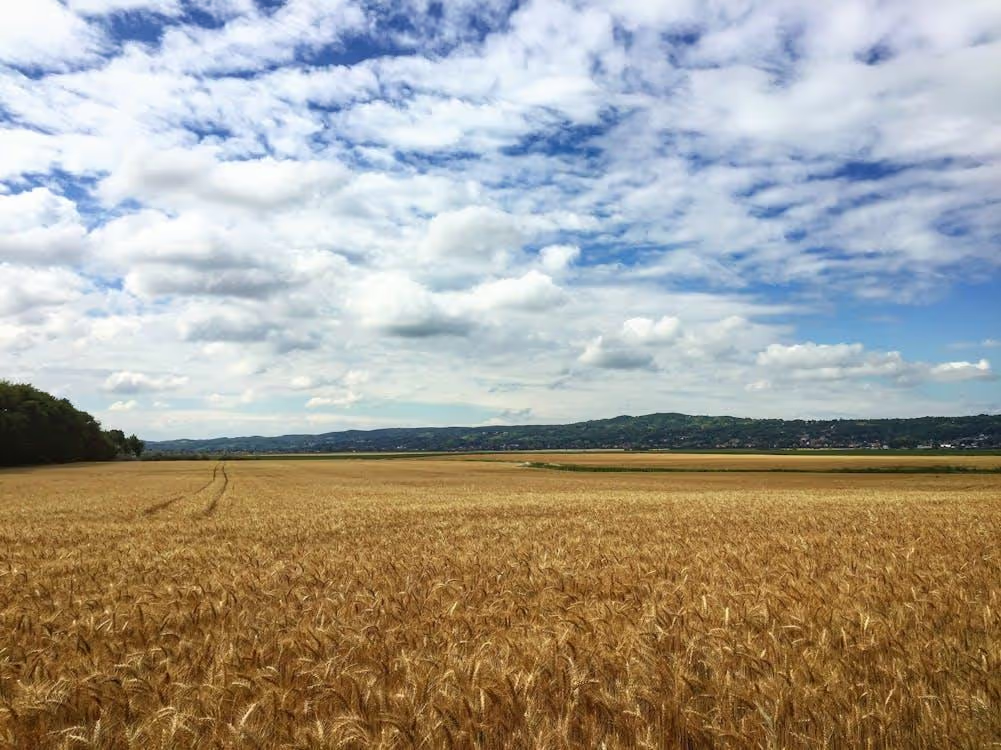How to Invest in Minnesota Land?
Return to BlogGet cash offer for your land today!
Ready for your next adventure? Fill in the contact form and get your cash offer.

By
Bart Waldon
With around 54 million total acres spanning sprawling farms in the southern half and dense forests up north, robust Twin Cities metro expansion plus nearly 10,000 picturesque lakes dotting the countryside, opportunities abound investing in Minnesota land delivering stable long-term returns. However, successfully acquiring, managing and ultimately profiting on raw land investments remains complex navigating for newcomers.
This guide taps input from property developers and legal teams facilitating high value land deals helping new investors understand basics scouting potential sites all the way through deal execution and value extraction via usage leases, timber harvesting or eventual sale flips putting undeveloped rural acreage to work.
By The Numbers: A Snapshot of Minnesota Land
Before detailing practical land investing and development steps, foundational data merits review grasping the wider Minnesota real estate landscape and just how abundant open land abounds cost-conscious real estate investors:
- Over 54 million total land acres across Minnesota
- Roughly half lands actively farmed totaling 23+ million crop acres
- 17 million acres of forest and woodlands BLANK
- Average per acre cropland value: $5,300 varying significantly by county
With considerable upfront effort and expenditures often required preparing vacant acreage for revenue-driving utilization down the road through farming, timber harvests, mineral extraction leases or eventual site development, Minnesota offers no shortage of land asset classes matching risk-to-reward comfort levels for investors of all experience levels.
Steps for Investing in Minnesota Land Opportunities
With such an abundance of sites to choose from, pursuing vacant Minnesota land investments paying dividends long term requires following deliberate steps maximizing result probabilities once acquired.
Clearly Define Usage Objectives
Whether long-holding for price appreciation plays, executing sale-leaseback strategies with commercial farmers, selectively harvesting timber over growth cycles or prepping pad sites for construction verticals in future years, defining intended land usage channels drives suitability filtering early when identifying candidate investment sites. Are income streams sought immediately or can near-term carrying costs get funded awaiting higher-value triggers down the road? Firm usage theses prevent subsequently misaligned assets.
Conduct Thorough Due Diligence Pre-Acquisition
Beyond verifying clean title histories, confirming property line boundaries with surveys and having environmental/geotechnical inspections completed assessing contamination risks and load bearing capacities during potential later construction phases, buyers should clarify:
- Zoning limitations governing permissible site usages both currently and under possible future re-zonings
- Tax assessment trends and multi-year levy details
- Right of way access paths continuity for ingress/egress needs
Such confirmations avoid overlooking restrictions possibly severely limiting by-right development capabilities post-purchase.

Model Required Infrastructure Costs Matching Envisioned Site Uses
Raw land parcels frequently trade at pricing discounts precisely due to needed access road, utility service line and vegetation clearing/earthmoving improvement expenditures impending buyers before properties become usable - much less cash flowing. Estimating infrastructure tie-in budgets and site enhancement costs determines purchase valuations and holding period return calculations. Ignoring such prep work risks major financial pitfalls.
Explore Creative Seller Financing Options Preserving Capital
Beyond leverage friendly mortgages, occasional seller financing, contract-for-deed arrangements and fractional sales partnerships allow investors accessing productive land assets while mitigating near-term out-of-pocket carrying charges through flexible repayment structures over eventual 5-10 year full ownership timetables minimizing buyer risks. Investors lacking expertise staging land improvement projects benefit from such capital preservation options.
Maintain Patience Waiting for Opportune Exit Windows
While appealing buying land plots at perceived discounts during economic downturn cycles thanks to wavering development demand, ideal investment holding periods often get measured over full decades waiting for regional macro conditions strengthening exit potential. Local site dynamics outweighing wider trends rarely emerge. Selling into temporary strength provides rewards outweighing risks holding through intervening volatility.
Benefits of Investing in Minnesota Land
With roughly 54 million total acres, over 23 million acres dedicated for farming use and 17 million more acres supporting active timber harvests annually, robust natural resources form economic foundations across Minnesota also driving associated vacant land parcel investment appeals. Various benefits emerge owning and holding raw land assets.
Inflation Hedging
As safe haven hard assets, land ownership provides effective shields battling inflation erosion effects deteriorating cash holdings wasting away in traditional low-yield savings accounts amid periods of rising consumer prices. Appreciating property also confers tax advantages when sold rather than taxable investment account withdrawals facing levies.
Passive Income Potential
Beyond anticipating eventual property sale paydays over multi-year holds, vacant land plots offer interim lease, license and rental income streams as owners broker access for hunters, farming operators, timber managers, telecom tower builders and outdoor advertisers to tap into site level revenue opportunities while awaiting future flipping or development.
Hidden Gem Site Discovery Potential
Intrepid investors willing to venture exploring relatively obscure rural acreage buying opportunities chasing projected regional development arcs often uncover hidden gem parcels off the beaten path few competing buyers have accessed thus allowing site acquisition costs significantly below readily apparent mainstream listings. Being first uncovering emerging hot pockets powers profitability.
Lifestyle and Legacy Perks
Lastly, large rural land holdings offer intangible quality of life perks beyond purely monetary motivations for passionate outdoorsmen seeking vast space to construct seasonal lake cabins accessing idyllic retreats surrounded by beautiful horizons and nature’s bountiful activities through all four seasons average Minnesota weather cycles bring. Legacy land assets rich in family memories accumulate lasting personal value holding through generations.
In summary, beyond wealth building and inflation mitigation perks, Minnesota land investments check the boxes matching lifestyle preferences and family heritage preservation objectives over long-term holding periods as well building durable wealth legacies.

Final Thoughts
Minnesota's abundance of productive farmland and timber acreage offers investors no shortage of land asset investment choices once grasped nuances navigating opaque purchasing and property improvement processes shelter risks until project activations. Defining intended land usages then collaborating with specialized legal and engineering teams enhances success rates turning raw acres into steady income streams over multi-year hold periods. Patience holding for ideal selling cycles pays dividends.
Frequently Asked Questions (FAQs)
What are property tax rates like on vacant land in Minnesota?
Effective tax rates range between 1% and 2% of assessed market property values across Minnesota's counties and municipalities. Agricultural land parcels often receive preferential tax treatment on a portion of market rate assessments however saving families with intergenerational farmland holdings considerable recurring tax burdens.
What Minnesota land parcels typically sell at higher premiums?
In-demand lakeshore plots with water access in Minnesota's treasured 10,000 lake regions frequently sell for premiums on a price per acre basis factoring sought after recreation dynamics certain buyers find highly desirable. Parcels adjacent to expanding exurban communities also trade higher on expected residential or commercial development upside.
What risks exist buying land in Minnesota sight unseen?
When buying remote land parcels remotely absent thorough on-site diligence first, risks run higher discovering unattractive attributes post-purchase like significant swamp areas deterring builds, odd property shapes challenging farming equipment logistics or poor surrounding site views negatively impacting envisioned cabin escapism retreat visions certain owners had mentally framed initially.
What sellers make the best partners for creative land financing?
Inheritance beneficiaries receiving raw land devises or corporate entities divesting non-core real estate from broader business focus shifts often exhibit flexibility crafting creative installment sales contracts, lease-to-purchase arrangements and flexible owner financing terms allowing buyers accessing deals despite near term cash limitations. Land financing remains negotiable in many situations.
Can I use a self-directed IRA to buy Minnesota land tax deferred?
Yes. Self-directed IRAs can hold approved unconventional assets like raw land serving as retirement investment portfolio diversifiers avoiding tax erosion until mandatory IRA distributions apply later in life. Periodic land use licensing revenue even bolsters deferral account balances further minimizing cash infusion needs. Professional administration helps navigate regulatory nuances.
What transaction costs should I budget when buying Minnesota land?
Typical closing costs range between 4% and 10% of purchase prices including critical insurance policies, attorney fees, inspection/appraisals, recording charges, transfer taxes and occasional priority lien payoffs required before clean title conveys. Survey costs also factor for unplatted rural lands to conclusively map boundaries reducing future disputes.
